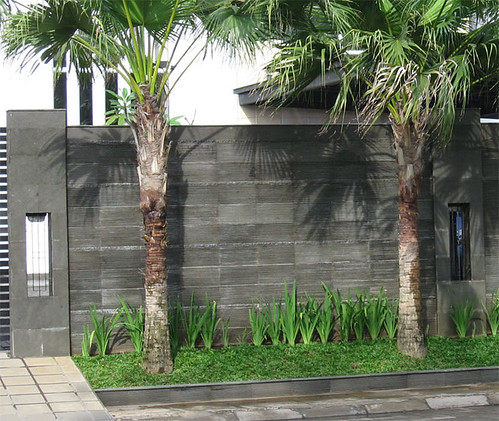NATURAL STONE WALL DESIGN
Natural stones are placed on the outer wall of the house was often bring a different sensation to the tropical-style house.
Natural stone can strengthen tropical impression that, because of natural stone is identical to a natural impression. While at the home of modern, natural stone can and able to give the impression of cool and comfortable.
Andesite Stone Types and Temple is a stone that attracted many people to design their homes.
The first reason is because its strength is resistant to changes in climate weather, the second reason is because the texture and neutral colors tend to be dark, making it suitable to be applied in a modern style home.
Unfortunately, the current prices of the two types of this stone, Stone Temple Andesite and still relatively expensive and exclusive. So many are reluctant to use of both types of stone.
Here are Tips and How to Make Homemade Natural Stone, So you do not need to spend a lot of money so they can save money;
1. Create a mortar cement plaster. In order stucco can produce a rough surface such as the Natural Stone, is add the sifted sand in the cement plaster dough.
2. Cover the walls with a mixture of cement plaster on a minimum thickness of 3 cm to look like stone, such as making regular plaster on the walls.
3. After the cement plaster on the half-dry conditions, immediately Sandpaper wall surface. Some plaster will peel off and form a rough texture like a stone.
4. When the plaster is still wet, use a wood or a ruler to scratch lines on the plaster walls, with a plaid with a different size (to your taste). For the record, steps 4 and 3 can be done in reverse order (first 3 or 4 first).
5. Paint using a paint walls. To appear more natural, do not use just one color paint. Use 2 or 3 colors but with a level of color (tone) is different. For example, dark gray paint with a paint color gray younger. Mix and match both types of paint.

Imitation stone wall immediately ready to adorn the walls and the atmosphere of your home with more natural impression.






